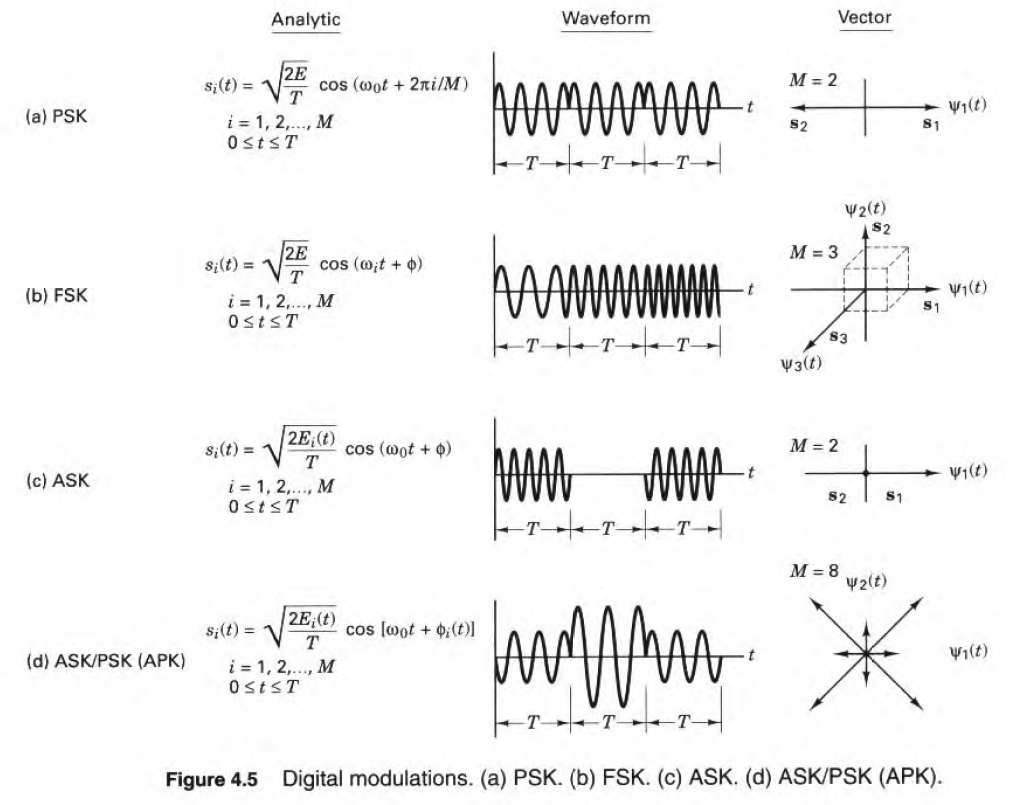

Shift keying methods can be combined in tandem, similar to QAM. Carrier aggregation provides another doubling of the data rate, ultimately reaching Gbps levels over the air. This modulation technique is used in 5G, where 64-QAM or 256-QAM is used in different frequency channels to provide multiple bit streams with a high data rate. QAM combined with frequency division multiplexing (FDM), we have a multichannel technique called orthogonal frequency division multiplexing (OFDM). The possible list of states can be visualized using a constellation diagram, which shows the list of possible states.
.jpg)
At the receive side, this gives N 2 possible logic states that can be transmitted in a communications channel. Quadrature amplitude modulation (QAM) is most common this technique is really a combination of N-level MASK with BPSK. Quadrature modulation methods are some combination of single-level or multilevel shift keying methods. In this method, a phase shift is applied to the lower leg of the diagram to produce two out-of-phase signals.Įxample block diagram for generating QAM signals At the receiver, the two signals are demodulated to recover the two modulating waveforms that correspond to the dual input bit streams.Ī block diagram showing the transmission method used in a QAM technique is shown below. The two bit streams are then combined with an adder and transmitted.

The two bit streams are transmitted with a half-wave phase shift between them so that only one portion of the carrier wave is active at any time. In quadrature modulation schemes, two portions of a digital bit stream are transmitted in parallel in a communications channel. Quadrature MethodsĪSK, PSK, and FSK all have a variant that involves demodulating the received signal in quadrature. For example, if we want to transmit a 3-bit digital bitstream using multilevel FSK (MFSK), we could use 23 = 8 frequency levels the same applies to multilevel ASK (MASK) and multilevel PSK (MPSK). In fact, ASK, FSK, and PSK can be multilevel methods, where the signal characteristic is varied between multiple discrete values. It is sometimes assumed or implied that ASK, PSK, and FSK are “binary” methods (BASK, BPSK, and BFSK), meaning the signal characteristics are only varied between two values. Although these are easier to implement in terms of circuit design compared to other digital modulation methods, they can be limited in terms of bit rate.įSK, ASK, and PSK (middle graph to bottom) shown in the time domain These methods are among the simplest to implement, as they only involve variations in one signal quality: amplitude for ASK, phase for PSK, and frequency for FSK. Amplitude, Phase, and Frequency Shift Keying (ASK, PSK, FSK) The information signal is then used to modulate (vary) the phase, amplitude, and/or frequency of the carrier signal. In digital modulation, the information signal takes discrete levels, while in analog modulation, the information signal has no discretization and can take any level. The only difference between analog and digital modulation is found in the information signals.
.jpg)
The two signals that are used in modulated communication are the carrier signal and the information signal. Modulation refers to the technique of mixing two signals to transmit information. For systems designers and RF designers, it’s important to understand the various types of digital modulation, as each format can place performance constraints on a design. Today, digital modulation formats are standard in wireless communications and they enable higher data rates in wireless channels. These modulation formats aren’t limited to AM and FM transmission phase modulation, pulse modulation, and combinations of all of these modulation formats can be used to transmit digital and analog information over wireless, copper, or fiber channels. Wireless and fiber systems use digital modulation formats to transmit at high data rates.Īmplitude modulation and frequency modulation are probably the most familiar modulation formats, but they both fall within a larger set of modulation formats: analog and digital modulation. Modulation methods are divided into digital and analog formats.ĭigital modulation applies discrete modulation levels to a carrier signal, producing a discrete set of signal characteristics that are used to encode digital information.


 0 kommentar(er)
0 kommentar(er)
